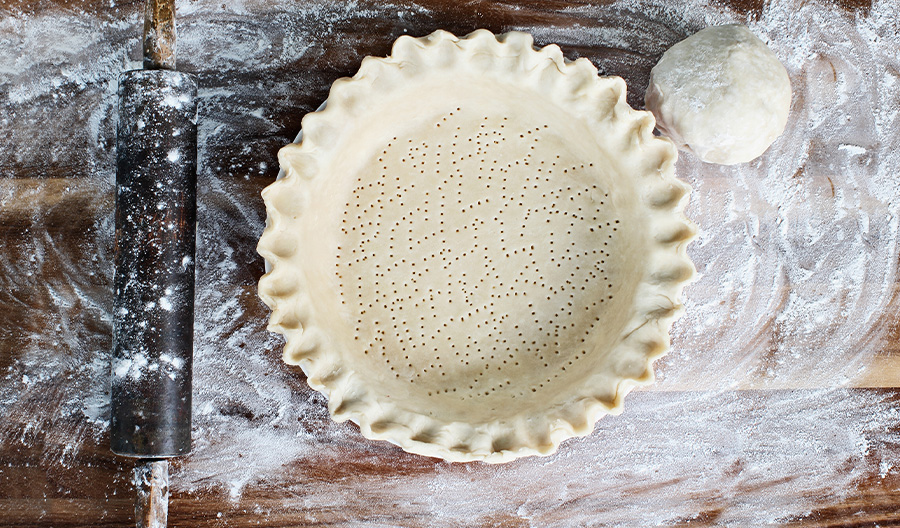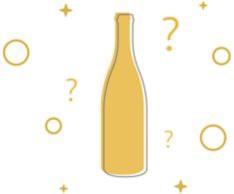The Science Behind the Solution
Vodka is the secret ingredient for a tender pie crust. The good news is the alcohol will vaporize in the oven, so the pie crust doesn’t have a lingering boozy taste.
A bottle of 80-proof vodka contains 40% ethanol alcohol and 60% water. As a result, it hydrates dry ingredients like flour differently than if you’d used the same amount of water.
The typical method when making pie crust is to add water to a mix of all-purpose wheat flour, butter and salt to make a cohesive dough. Flour has two different proteins in it, glutenins and gliadins, which form gluten when water is present.
Gluten gives dough elasticity. If you’re baking, say, a loaf of bread, you want to develop and activate the gluten so the end result is chewy.
But, for pastry dough like pie crust, you want just enough gluten to form so the dough holds together, but not so much gluten that you develop a tough and hard crust. Vodka allows you to wet the dry ingredients enough so it forms a dough that is easy to roll out and use, but has less water in it, so less gluten will form.
The technique was developed by J. Kenji López-Alt, author of The Food Lab: Better Home Cooking Through Science and The Wok: Recipes and Techniques, for Cook’s Illustrated back in 2007.
“We were trying to develop a new pie crust recipe for the holidays,” says López-Alt. “The goal was to make a pie crust that’s foolproof, that’s very easy for people to roll out, even for people who’ve never made pie crust before, and with results that are still flaky and tender.”
López-Alt found that dough made with vodka is stickier and tackier than most pie crusts, which tend to be dry and prone to crumbling. And that’s a good thing.

“A lot of people, the problem they have with pie crust is if they make it with just enough water so that it stays tender, then when they try to roll it out, it cracks,” says López-Alt.
Part of the problem lies in how many recipes are written. To accommodate different climates, flours and bakers, instructions include exact measures of dry ingredients, but the correct amount of water can range from two tablespoons to a quarter-cup.
Most recipes leave it up to you to decide how much to add, which can throw some people off because they don’t know yet if it’s wet enough or still too dry. The vodka is a little bit of insurance. You make a dough that’s obviously wet in the machine or bowl, and so there’s some guarantee that you’re not overdoing it.
Other Possible Liquors
Not a vodka fan? No problem, López-Alt says. He tested it with bourbon, Cognac, tequila, vodka and gin, and all worked beautifully. The amount of liquor is so small that it doesn’t affect the flavor of your finished pie, either.

